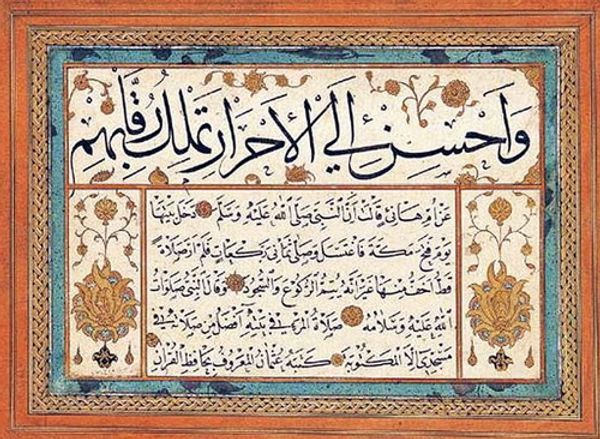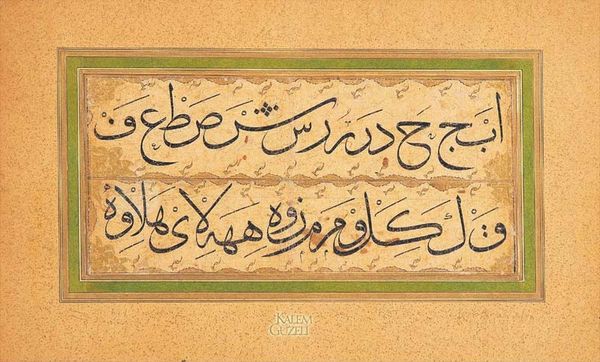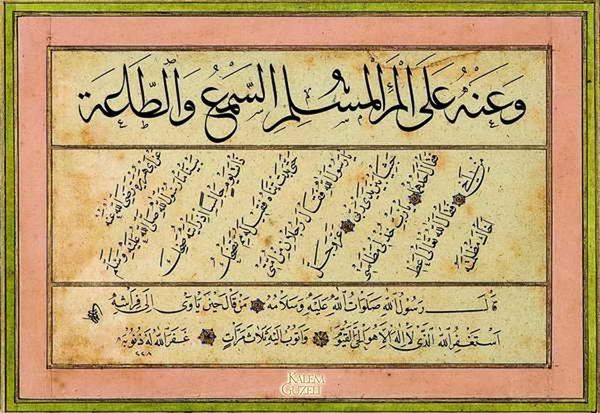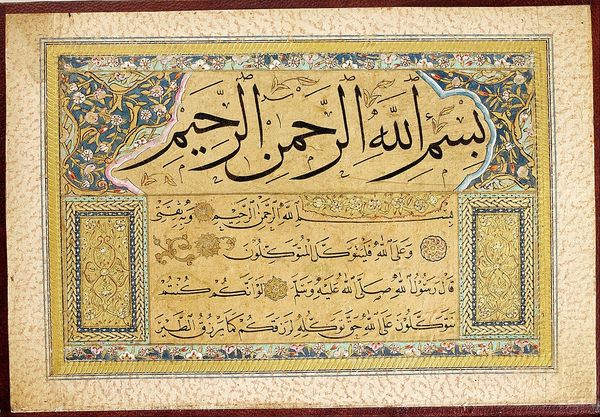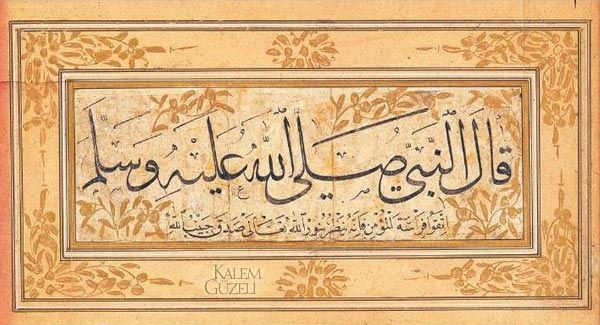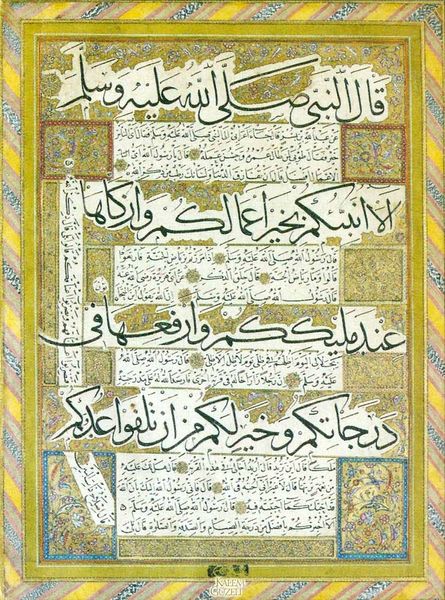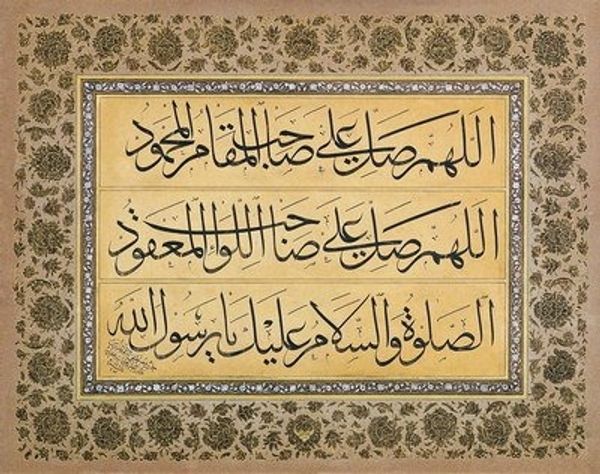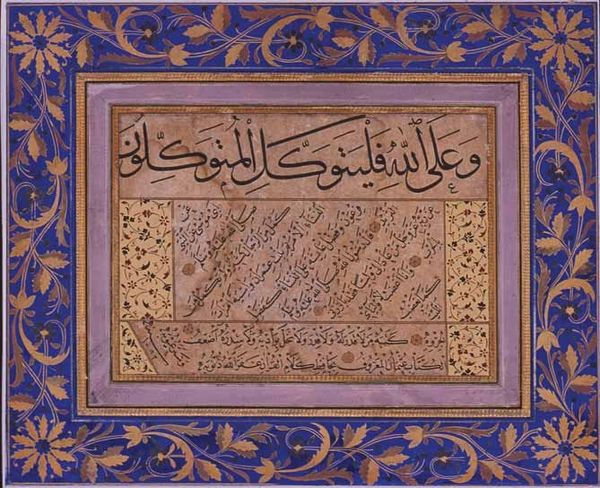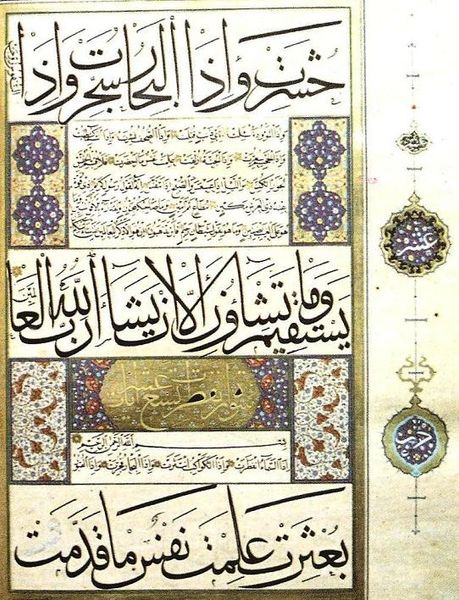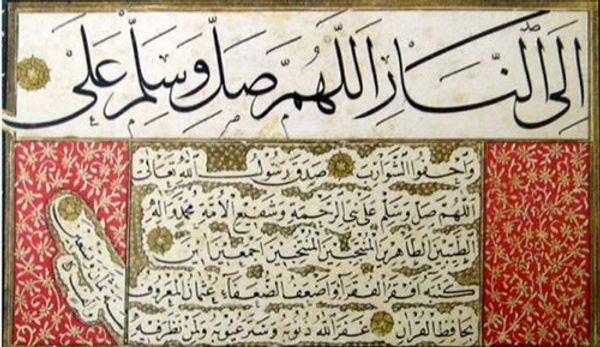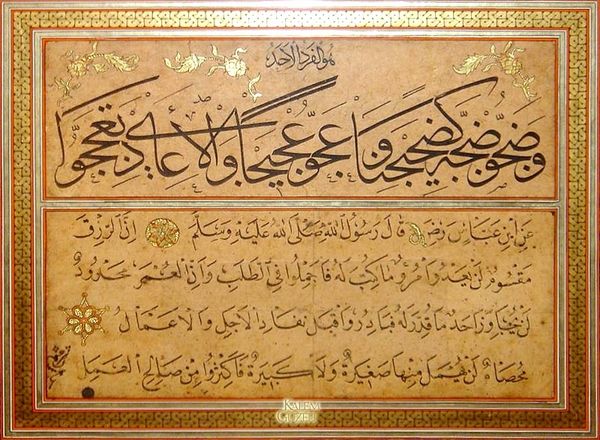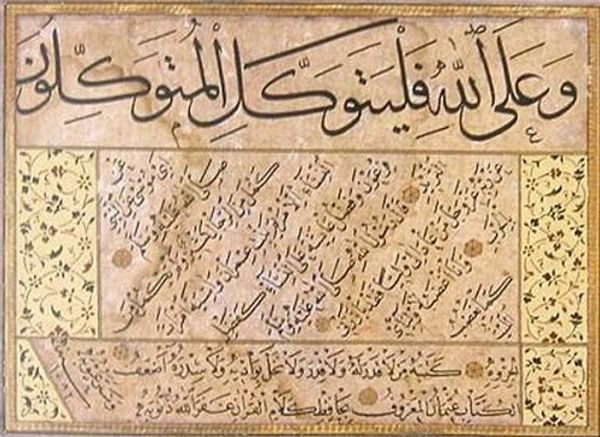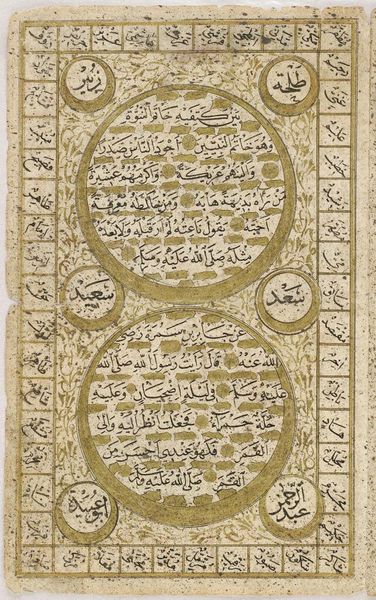
mixed-media, paper, ink
#
mixed-media
#
asian-art
#
paper
#
ink
#
islamic-art
#
decorative-art
#
miniature
#
calligraphy
Copyright: Public domain
Curator: My eyes are immediately drawn to the way the bold, flowing calligraphic forms seem to dance against the backdrop of delicate floral designs. What is your initial reaction? Editor: Curator: I'm struck by the artwork's profound stillness. Despite the detailed ornamentation, there's a meditative quality to the composition that quiets my mind. It feels inherently respectful. I also feel that, from an aesthetic standpoint, we are encountering some really important historical, cultural, and political expressions that provide a kind of grounding counter-narrative. Curator: Indeed. This piece, simply titled “Kıta-,” and believed to be by Sheikh Hamdullah, is a gorgeous example of Islamic calligraphy, likely dating back several centuries. It is an exquisite mixed media piece on paper and ink that is very evocative of illuminated manuscripts in other cultural traditions. It blends spiritual expression with incredibly sophisticated design principles. Editor: Seeing this makes me think about the role of art as resistance, or rather as a reaffirmation. During times of cultural suppression or erasure, artwork like this could become incredibly powerful assertions of cultural and religious identity. Can we see this piece, irrespective of its original cultural and historical purpose, as a type of resistance, as the bold declaration of being, resilience, and truth. Curator: I see that. The letters themselves serve as symbols deeply ingrained in cultural memory and are thus inseparable from its narrative. They convey layers of meaning accumulated over centuries of shared experience and understanding, while being aesthetic markers of beauty for initiates. Editor: Looking closely, I am drawn to how it fuses form and meaning, becoming both aesthetic beauty and powerful statements for self-affirmation that defy oppression. I wonder, however, if our interpreting it that way now overemphasizes Western perceptions of resistance as exclusively an activist positionality. Curator: That’s something to certainly consider. And of course, our dialogue is taking place divorced from the piece’s context and, one could argue, its intent. Yet even so, our readings here serve as a continuation of meaning, wouldn't you agree? Editor: I completely agree; art endures to generate ever newer forms of relevance through ongoing dialogue, which inevitably speaks to both its moment of inception as well as those moments following in its long afterlives. Curator: Well said.
Comments
No comments
Be the first to comment and join the conversation on the ultimate creative platform.
